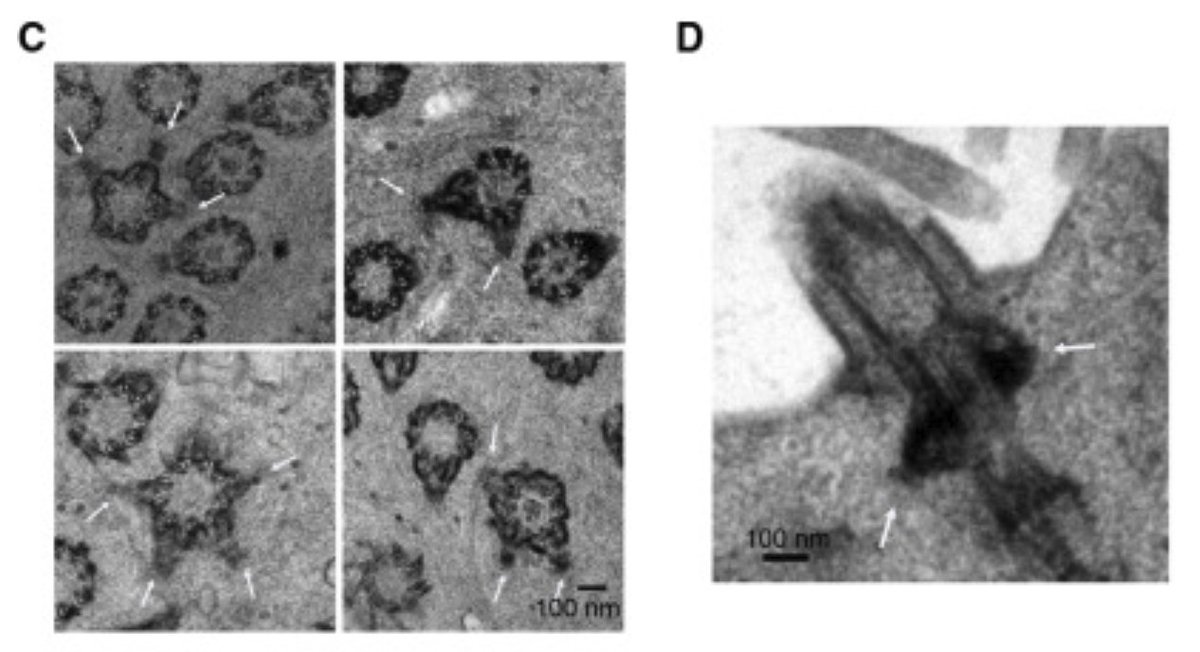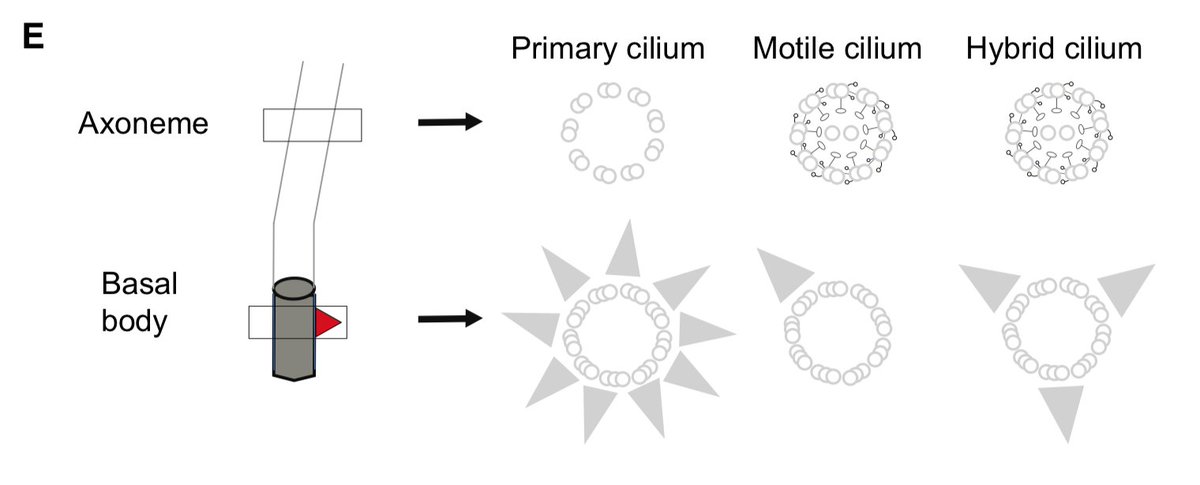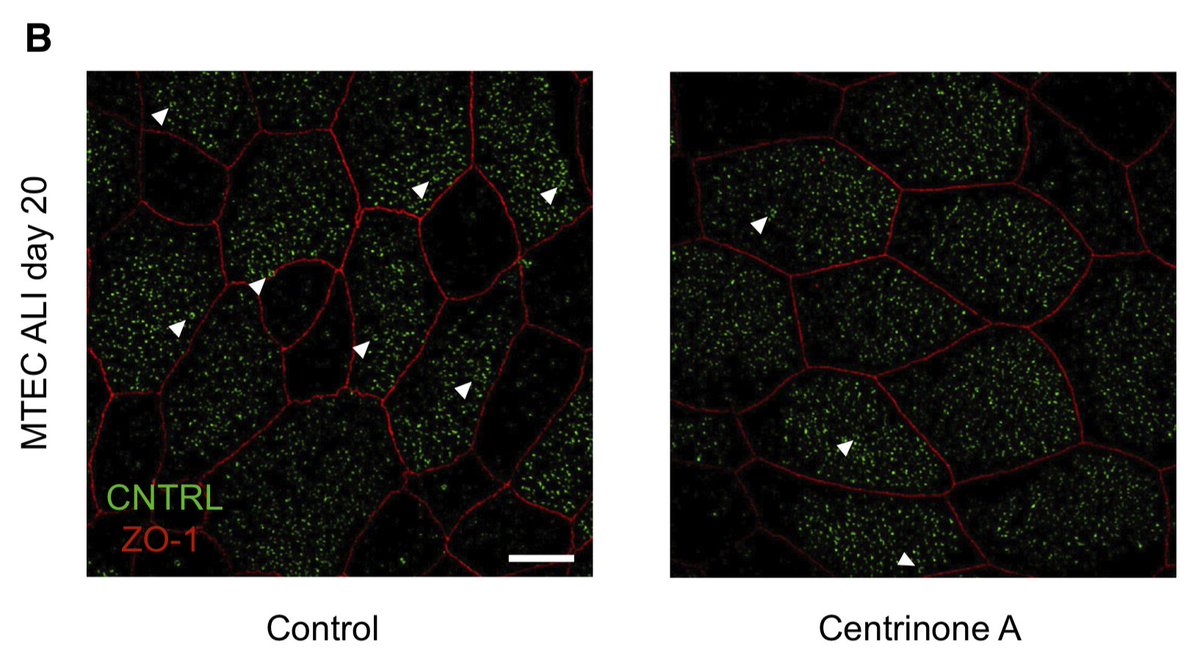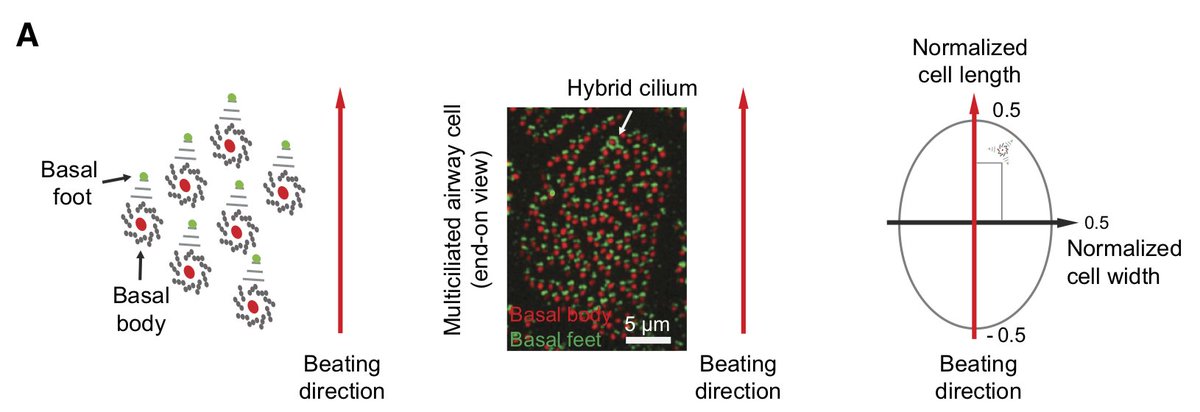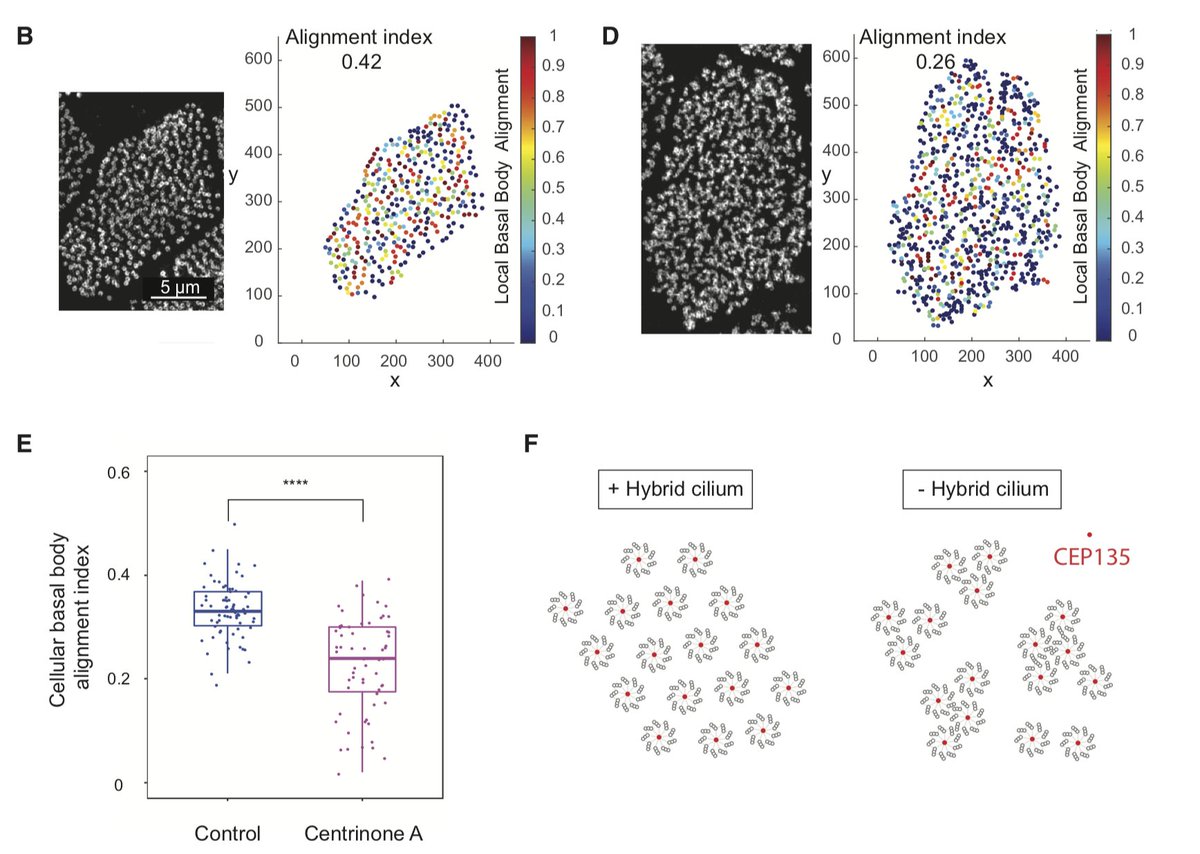New paper out! Finally got some time to tweet about this wonderful collaboration with @MennellaVito.
Ever wonder what happens to the original (parental) centrioles in a multiciliated cell? Are they retained? Do they do anything special?
Read on https://abs.twimg.com/emoji/v2/... draggable="false" alt="👇" title="Rückhand Zeigefinger nach unten" aria-label="Emoji: Rückhand Zeigefinger nach unten"> https://www.cell.com/developmental-cell/fulltext/S1534-5807(20)30718-8?rss=yes#.X4XrLjv1ELM.twitter">https://www.cell.com/developme...
https://abs.twimg.com/emoji/v2/... draggable="false" alt="👇" title="Rückhand Zeigefinger nach unten" aria-label="Emoji: Rückhand Zeigefinger nach unten"> https://www.cell.com/developmental-cell/fulltext/S1534-5807(20)30718-8?rss=yes#.X4XrLjv1ELM.twitter">https://www.cell.com/developme...
Ever wonder what happens to the original (parental) centrioles in a multiciliated cell? Are they retained? Do they do anything special?
Read on
Using a combination of proteomics and super-res. imaging, @MennellaVito group mapped the position of basal foot proteins at centrioles/basal bodies of primary and motile ciliated cells. You can read more about that in the first paper here: https://www.cell.com/developmental-cell/fulltext/S1534-5807(20)30717-6?rss=yes#.X4XtQmKs72w.twitter">https://www.cell.com/developme...
In the process, they discovered that one of the centrioles in multiciliated cells (MCC) contains more than one basal foot, unlike the hundreds of other centrioles that each form only one foot structure.
Interestingly, this centriole forms a cilium that is motile and contains motility factors. This was named a "hybrid" cilium, since it contains features of both primary cilia (multiple basal feet) and motile cilia (central pair, dynein arms etc).
We hypothesized that this hybrid cilium might originate from the parental centrioles. Indeed, eliminating the parental centrioles in the progenitor cells caused loss of the hybrid cilium from the differentiated MCC.
The position of this hybrid cilium is biased towards the leading edge of the cell (ie. direction of ciliary beating). This was confirmed by inducing directional flow over the surface of the cells. Importantly, the biased positioning was lost in PCD patients with immotile cilia.
Finally, we found that eliminating the hybrid cilium caused defects in basal body alignment, even if cells are subjected to direction flow. This suggests that the hybrid cilium functions (at least in part) in coordinating BB alignment and thus orientation of cilia beating.
As usual, there are many outstanding questions: how is biogenesis of the hybrid cilium regulated? How is it positioned? How does it organize the other basal bodies? Does it act like a rudder? A sail? Is it a signaling hub?
Lots of interesting things to follow up on.
Lots of interesting things to follow up on.
Finally, I& #39;d like to thank @MennellaVito and all the co-authors including @liuzhorion, Quynh Nguyen, my postdoc @rashmiwashu, the Meunier & Czymmek labs for a great collaboration!
And thanks to @nih_nhlbi for continuing to support our work on motile cilia biology https://abs.twimg.com/emoji/v2/... draggable="false" alt="👏" title="Applaus-Zeichen" aria-label="Emoji: Applaus-Zeichen">
https://abs.twimg.com/emoji/v2/... draggable="false" alt="👏" title="Applaus-Zeichen" aria-label="Emoji: Applaus-Zeichen"> https://abs.twimg.com/emoji/v2/... draggable="false" alt="👍" title="Thumbs up" aria-label="Emoji: Thumbs up">
https://abs.twimg.com/emoji/v2/... draggable="false" alt="👍" title="Thumbs up" aria-label="Emoji: Thumbs up">
And thanks to @nih_nhlbi for continuing to support our work on motile cilia biology

 Read on Twitter
Read on Twitter